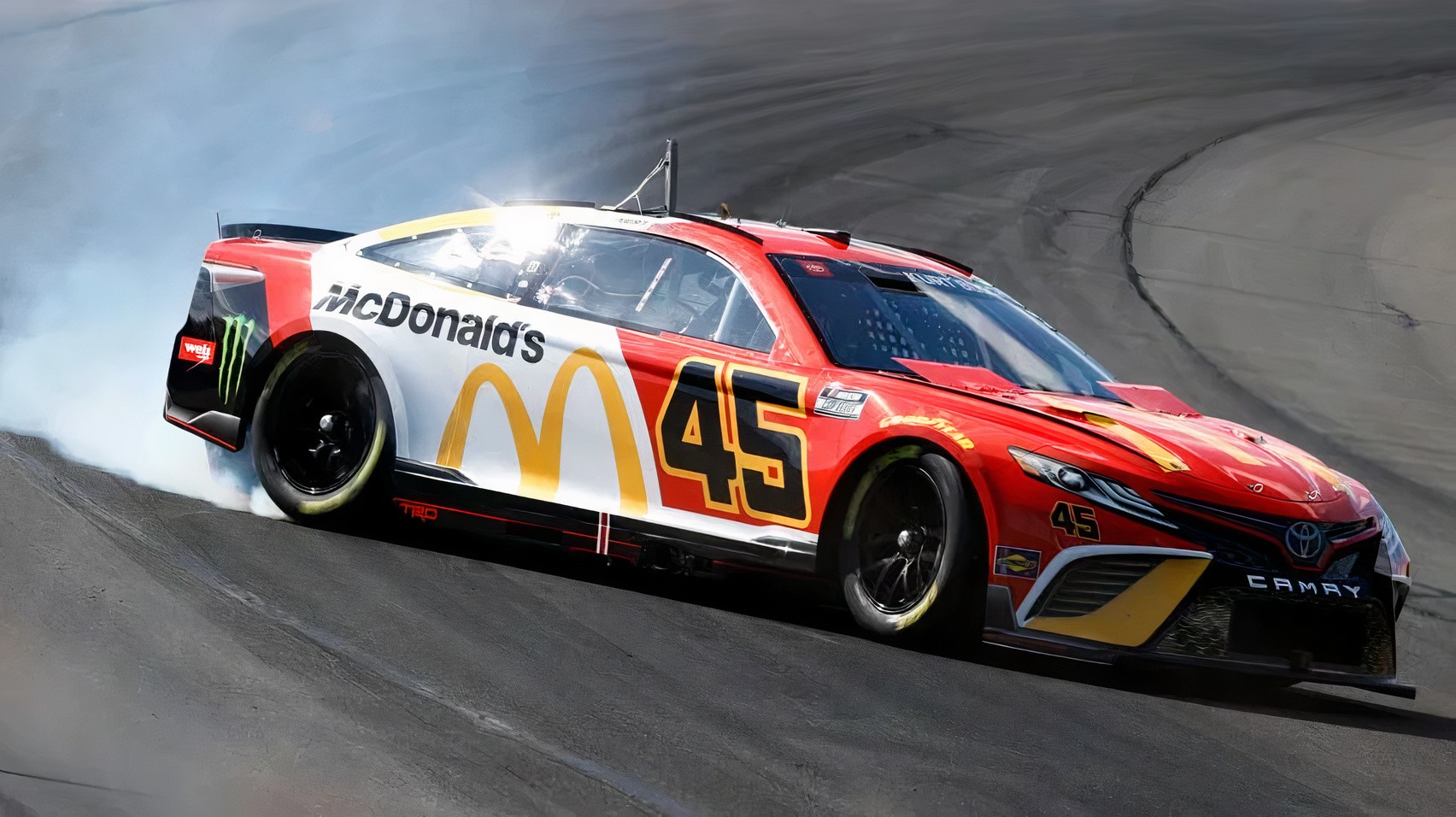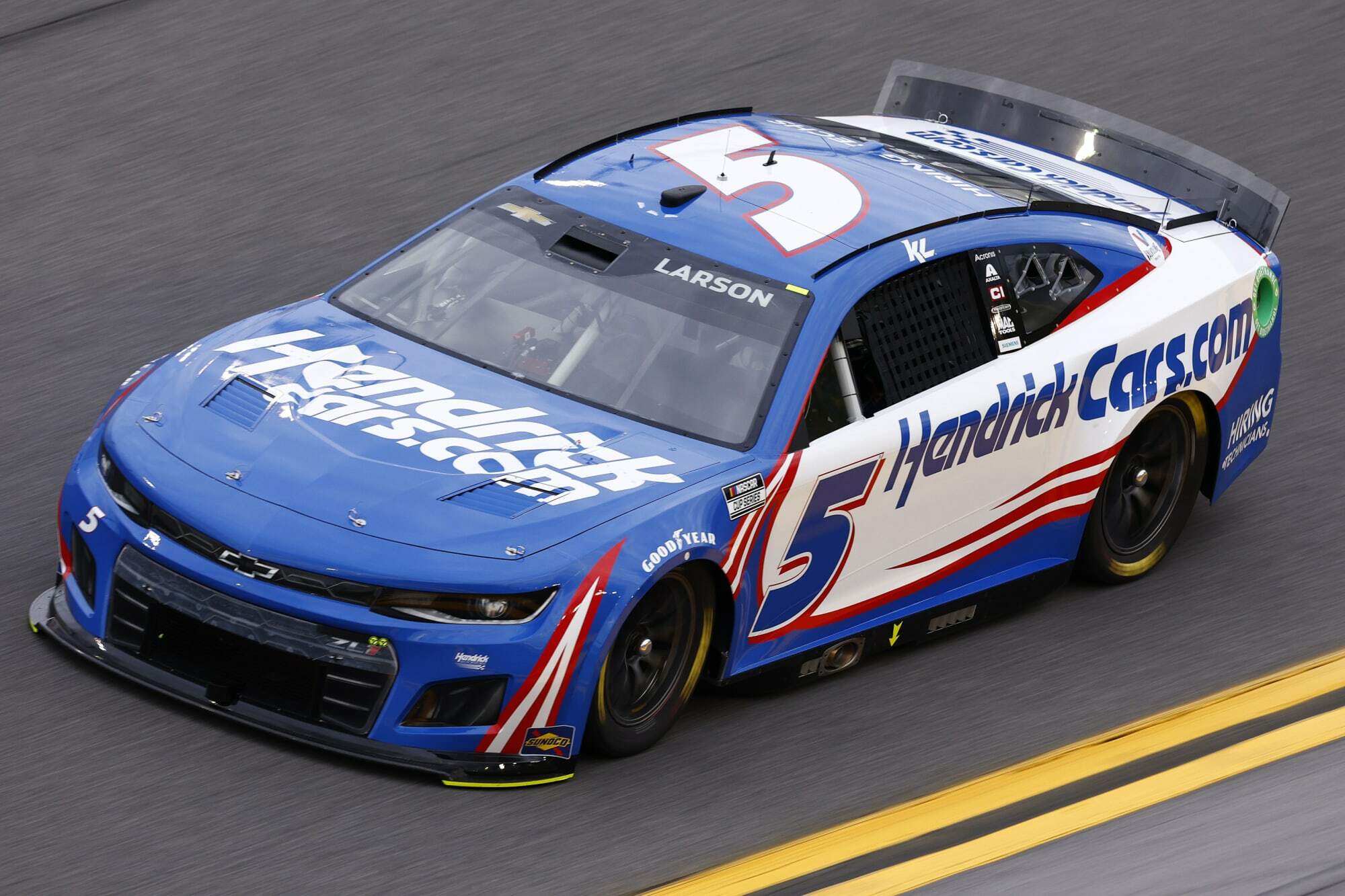Phelps Vows Better Communication with Drivers on Safety
During a segment on the NBC Sports pre-race show, NASCAR president Steve Phelps answered questions from Marty Snider, Jeff Burton, and Dale Earnhardt Jr. This was ahead of Sunday’s Cup Series race at the Charlotte Motor Speedway ROVAL.
There, he expressed sympathy for both the drivers in the push for safety advancements to the Next Gen car and the teams recent public advocacy for a better deal from the sanctioning body ahead of the next television rights agreement.
Regarding safety, Phelps said the meeting with drivers on Saturday was beneficial and conceded it should have happened sooner. Phelps and director of safety engineering John Patalak engaged with driver in an open conversation and presented 20 slides to them before practice and qualifying.
Phelps states that the sanctioning body will start weekly meetings with drivers as a consequence of the open dialogue. This is part of the process of implementing changes to the car’s rear in the upcoming off-season. Notably, NASCAR is working on a modified rear clip, bumper structure, and center clip.
“Phelps emphasized on-air that NASCAR places the highest importance on safety. He cited a two-decade history to back up this claim. He acknowledged that there are improvements to be made for the race car’s safety, particularly at the rear,”
However, this car has features that make it safer than the previous one. We will continue to collaborate with our drivers.
Yesterday, we conducted a fantastic meeting involving all drivers. We also have a separate collective known as the Driver Advisory Council that engages with the drivers. Jeff Burton, an excellent executive director, leads this group. It comprises seven Cup drivers, and we discuss a range of topics.
The group discusses a variety of topics, safety being one of them. Despite the commendable work of the Driver Advisory Council, an all-driver meeting surpasses it in effectiveness. Looking back, it would have been wise to hold such a meeting months ago to address safety concerns and understand drivers’ experiences in the race car. I take responsibility for that oversight.
That being said, we plan to hold meetings with all drivers for the remainder of the year on a weekly basis. The previous meeting proved to be highly productive, with the drivers expressing their thoughts openly. We presented a way forward, including modifications to the car’s rear to decrease some of its rigidity, such as incorporating a larger crush panel.
We are interested in their opinions and take their words into consideration. Ensuring the car’s safety remains our ongoing commitment.

Last week, NASCAR conducted a test crash at an Ohio facility, which drivers claim will improve the impact of rear crashes, although it remains worse than with the previous generation of cars. Kurt Busch and Alex Bowman will miss the Cup Series race on the Roval this weekend due to concussion-like symptoms, along with Cody Shane Ware who is sidelined with a broken ankle.
Phelps stated that NASCAR will persist in pursuing modifications to further improve the rear impacts.
“He added that they aim to ensure that by the time they reach the Clash at the Coliseum, the drivers are confident in the car’s potential for success. They have also made modifications to the vehicle to mitigate the impacts the drivers are sustaining.”
Phelps acknowledged that fans should be concerned about the Friday morning media briefing called by the Race Team Alliance. During the briefing, a subcommittee of team executives warned that without a significant change in the business model under the next charter agreement, layoffs and closures could occur.
Phelps didn’t provide specific details, but he asserted his commitment to collaborate with the teams on cost reduction, revenue sharing, and expense management.
“Race fans likely aren’t concerned with the profitability of the teams,” stated Phelps. “However, I strongly believe they should be. Team profitability leads to improved competition on the race track, which is something fans are passionate about.”
“If teams lack the necessary funds to compete effectively on the race track, the quality of racing will inevitably decline. As the governing body, we are progressing with this understanding. We are in discussions with the teams, hinting at a possible increase in their revenue allocation.”
However, it is also crucial for us to collaborate with the teams managing expenses. It’s about striking a balance. As with any successful business, we need to consider incoming revenue, outgoing expenses, and ultimately, the profitability reflected in the bottom line.

Teams have expressed that following the development and implementation of a spec car this season, the only remaining option to reduce expenses would be through substantial layoffs. They have also communicated their desire for an increased proportion of the television rights agreement and a partnership with the sanctioning body, similar to arrangements observed in other sports.
The existing $8.2 billion broadcast rights revenue for 10 years is divided as follows: 65 percent goes to the tracks, 25 percent to race teams, and 10 percent to the sanctioning body.
We won’t be discussing the negotiations, however, I’m thrilled about the future prospects of our race teams. The collaboration between NASCAR and our teams is a positive move that will help promote the sport.
In the end, Phelps is hopeful regarding the status of the sport as the season concludes. He is of the opinion that the new car has brought about equality and rivalry, precisely what fans are eager to witness.
Simultaneously, it has been revealed on short tracks and road courses to produce excessive grip and downforce. Consequently, alterations will need to be made in this area as well.
“From a competitive perspective, the car has performed excellently,” said Phelps. “The number of green flag passes for the lead has surpassed any we’ve had in the sport’s history, based on our loop data. We’ve also had the most passes throughout the field in 31 races, setting us on track to break that record as well.”
“It’s thrilling. Yesterday, we had a meeting with one of our race teams, who some might regard as a ‘back of the grid’ team. The team principal expressed, ‘Every time I go to a race track, I believe we can win. I’ve never experienced this feeling before the introduction of this Next Gen car.'”
Don’t we want the underdog to have the chance to come in here and win?

